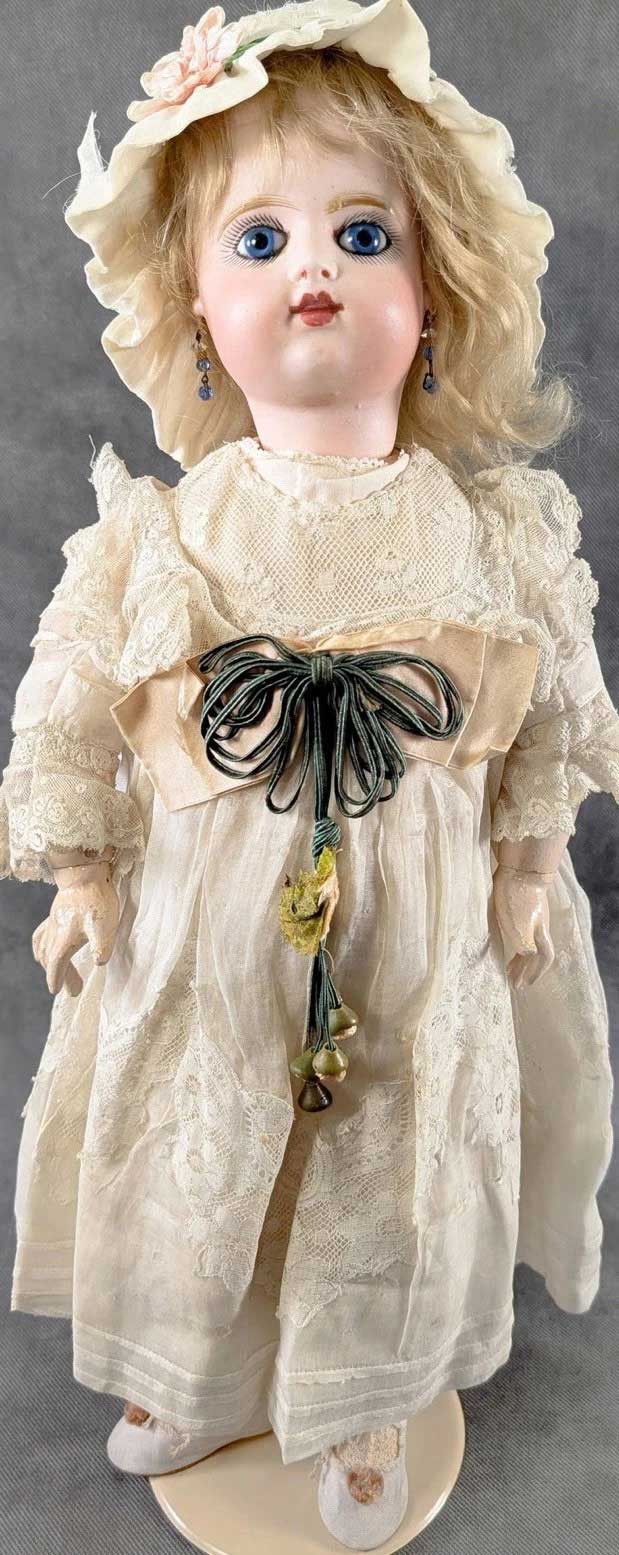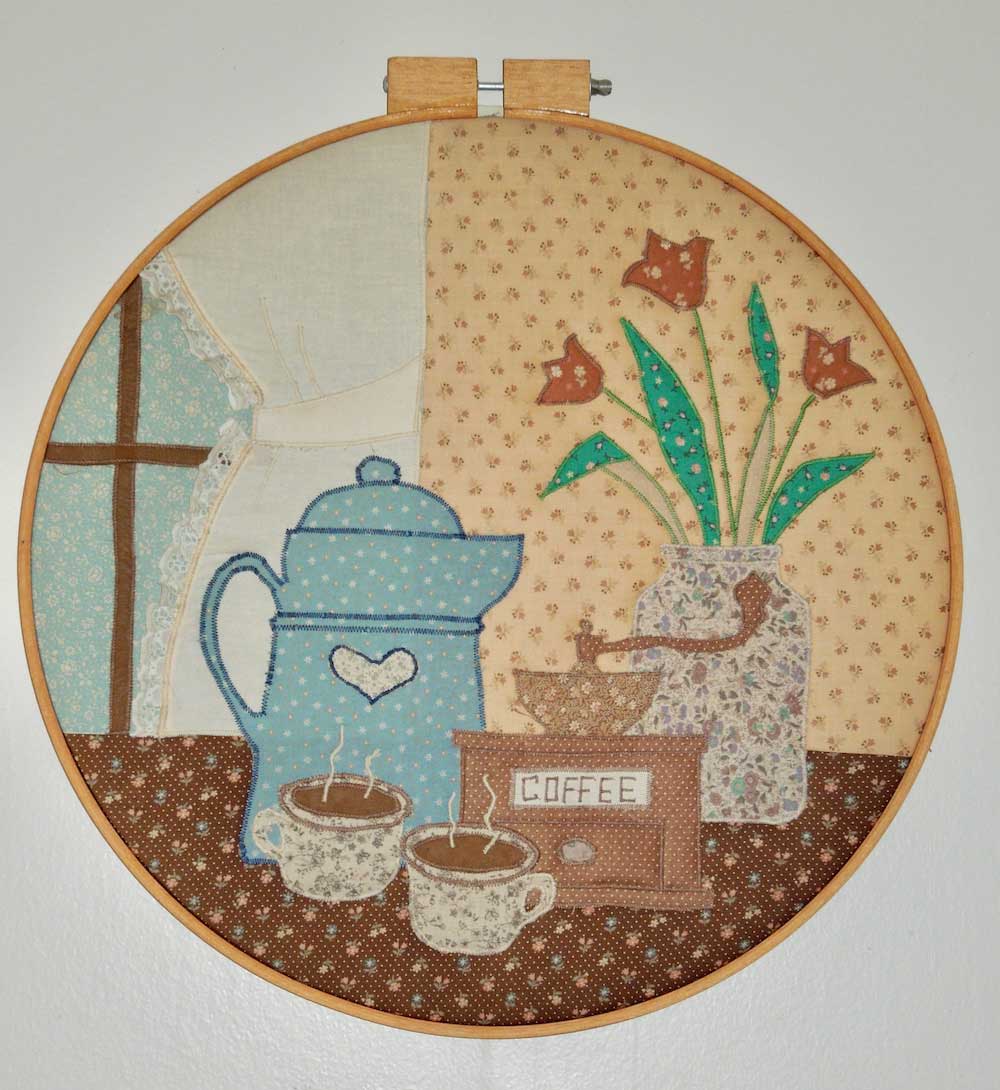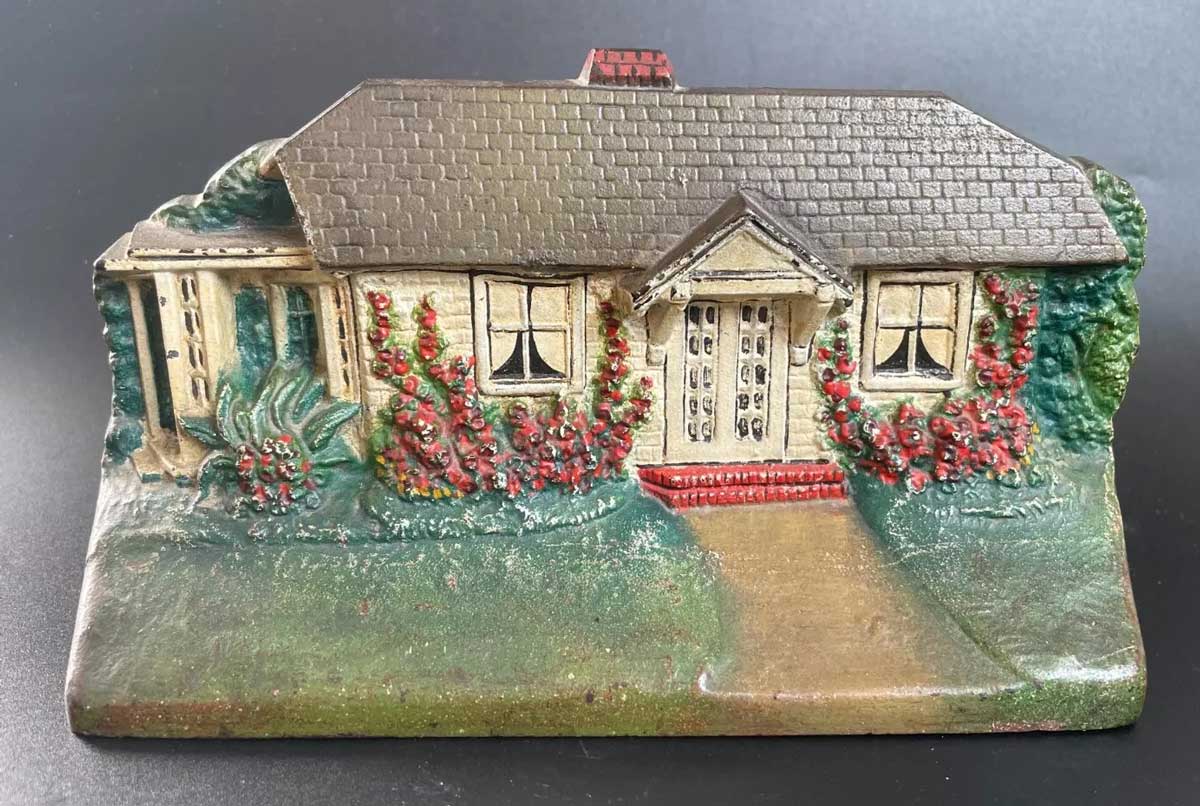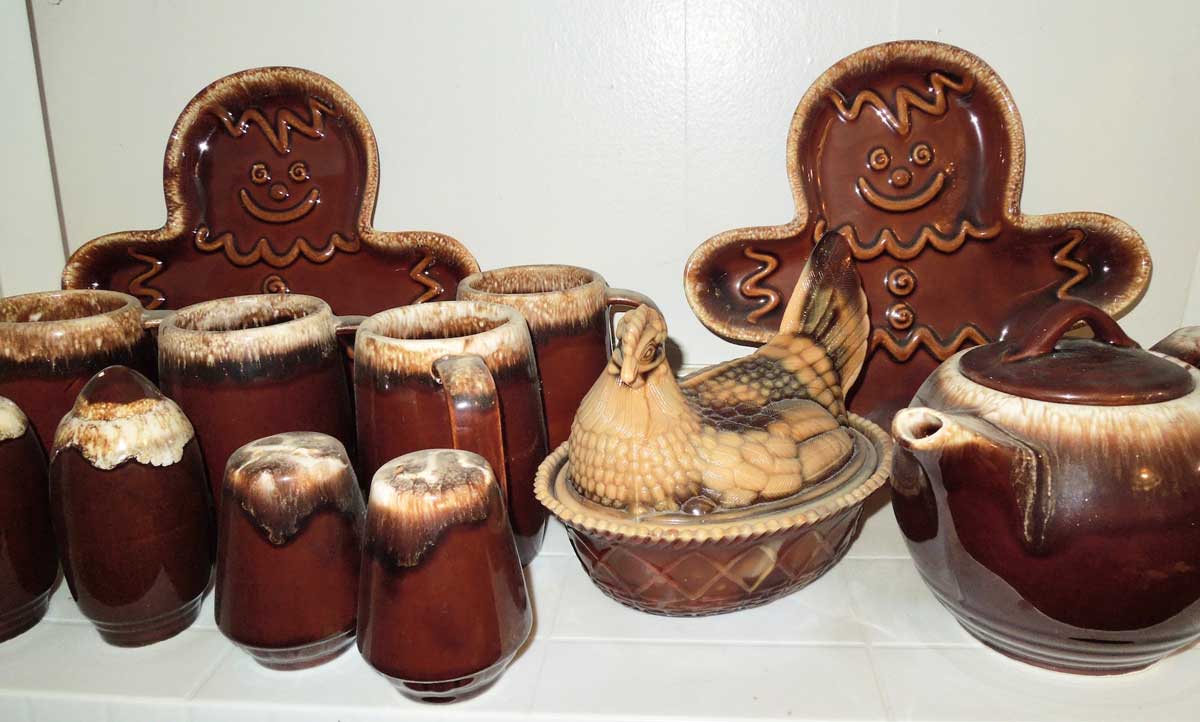All dolled up – To play or not to play
June 2025
Good Eye
All dolled up – To play or not to play
by Peggy Whiteneck
Children’s toys have been sought by adult collectors, especially items in their original packaging. For me, keeping dolls and other toys in original cardboard and cellophane is kind of a turnoff, as it subverts the very function of the item it encloses – something to be held and played with. Historically, dolls have had many functions, from child’s play to religious use – emphasis on ‘use.’
The history of dolls
Dolls date from 2000 years before the birth of Christ! Some have thought early dolls, made of various materials such as wood, clay, ivory, rags, and even corn husks, were used exclusively for religious purposes. However, dolls have been found in children’s graves “dressed in the latest fashions,” which seems to indicate that dolls also had roles in teaching and, yes, as playthings. Early cultures that had dolls included Africa, Japan, Russia, Germany, and the Netherlands. The indigenous Hopi of North America had Kachina dolls, usually made of carved wood and decorated in various ceremonial dress, that were used as messengers of gods or ancestors or as ritual items (www.historyofdolls.com).
Much later, in the late 19th and early 20th centuries, dolls became styled as “baby dolls” or as young children so that the kids who played with them could be pretend parents. Many of these dolls were remarkably accurate in their rendition of an infant’s head and facial features. Old dolls may contain a manufacturer’s mark on the back or back of the neck. (By the way, boys can play with them, too! A nephew of mine played with dolls among his “boy toys” and grew up to be a loving father of children of his own.)
African-American versions of dolls came out in the 1930s and ‘40s, but they were definitely a minority production, even by the 1980s, when I was an administrator at a rehab hospital and nursing center in North Miami. I bought dolls and other toys with funds donated by benefactors and the facility itself to be given out free of charge to adult staff, many of whom struggled to afford Christmas for their kids. I made it a point to include as many dolls as I could find with black and brown “skin,” and was deeply and genuinely annoyed to find they were so hard to find! But I kept shopping for them. More than one mother who came to my “store” became teary-eyed as she chose a doll with dark skin; more than one told me it was the first doll that actually looked like her own child that she had ever found.
And then there was Barbie (and Ken!)
There has perhaps been no bigger fad among kids or adult collectors than Mattel’s Barbie and, later, her beau, Ken. Barbie was made in a huge variety of sometimes elaborate costumes, depending on the profession she was designed to represent. These dolls came with an endless variety of accessories, from personal care items and costume changes to cars and houses. The first basic Barbie dolls from the 1960s were produced in bathing suits, with additional costumes that could be bought separately. The early Barbies were sometimes accused of fostering unrealistic and harmful body image for girls, and minor changes in the body were introduced in later versions to respond to these concerns.
Barbie was originally envisioned as a white creation. But consumers soon began asking for black and brown Barbies, and Mattel company complied.
Dolls made for adult collectors
Late in the 20th century, elaborately coiffed and dressed dolls began to be produced as collector items for adult buyers. These were mostly mail-order items advertised in magazines and were so carefully made that they would not have lasted more than a day or two in the hands of a playing child, no matter how careful the child was. Consumer taste is slow to evolve, and the feminine-gender appeal of dolls has continued throughout their history.

TThis late 19th century French doll made by Francois Gauthier (marked FG on back of neck) sold on eBay in May 2025 for $2,171.25. She was not the most expensive doll sold recently on eBay; several sold higher, including a Bru Jn-marked doll that sold in late April for $12,000! The highest-priced antique dolls seem to be in barely-played-with condition with very minor flaws.
Peggy Whiteneck is a writer, collector, and dealer living in East Randolph, VT. If you would like to suggest a subject that she can address in her column, email her at allwritealready2000@gmail.com.
Quilt art by the piece
May 2025
Good Eye
Quilt art by the piece
by Peggy Whiteneck
Most of us are familiar with quilted bed coverings, which have a history going back centuries. We’re also familiar with the prices the best of antique quilts can command today. Quilts can be found in many classic forms and colors in specially tailored alterations of these forms so that no two quilts in the same design ever look the same. Many of the older quilts contain arcane references to family histories or, in the case of Underground Railroad quilts that could be hanged outside, hints on ways for runaway slaves to make their way to freedom. For more information on bed-size quilts, see Sandra Starley’s column, “Covering Quilts,” published regularly here in Discover Vintage America.
My focus in this article is on smaller wall cloth and wooden building hangings that model quilts.
Small Cloth Quilted Wall Hangings
Antique bed-size quilts are sometimes displayed as wall hangings. Small pieces of quilting or embroidery, sometimes framed in embroidery hoops, appear to be a fairly modern take on the ancient art of quilting. At least, I couldn’t find any references to these smaller decorative accents dating before the mid-to-late 20th century. These will often be framed by embroidery hoops that can also be used to create neat squares that can be sewn together for larger quilts. The hoops used for wall hangings are often trimmed with lace or other fabric. Seen here is an unusually large quilted hoop that hangs in my kitchen. This one is double-sewn around the edges of the pieces used to make the picture.
Another example I have of a quilted wall hanging is a square piece (18”) signed Cheri Tamm Raymond, Newport, NH, 1983, making it more than 40 years old. In my experience, though, these small wall hangings are usually not signed.
The oldest small cloth wall hangings, some of them genuine antiques, may result from efforts to preserve sections of larger quilts too damaged to save. Find antique examples of small wall hangings on the Rocky Mountain Quilts website: rockymountainquilts.com.
Barn Quilts
Because wooden evocations of quilting are designed to accent barns and other outbuildings, they are larger than internal wall hangings. They are square, 4-feet-by-4-feet or 8 feet-by-8 feet and brightly colored, which makes them stand out against the uniformly and often sometimes drably painted buildings that they decorate.
This art form dates from about 300 years ago. It’s believed that they originated with immigrants settling in Pennsylvania. Those most commonly seen today have their origin in 2001 from Donna Sue Groves, who made one for her parents’ barn and sparked the modern craze for a reissue of this art.
The oldest of these had the same kind of function as cloth quilts, and they often repeated the artistic motifs of the cloth ones. Sometimes, these contained important messages, such as identifying farm ownership for travelers. They may have served as good luck charms to attract good luck and ward off the bad. It has also been suggested that the barn quilts, much as the cloth quilts that hung on porch rails outside houses, were signals to those fleeing slavery, telling them where to find shelter and food.

This large (21 in. diameter) hooped quilted wall piece was sewn with a tight zigzag stitch. The picture framed by the hoop is unusually detailed, in both the cloth pieced and the sewing (The lace on the edge of the curtain stands out three-dimensionally from the rest of the work). The hoop that frames the piece is 21” in diameter and would have been typical of the hoop size used in sewing pieces for a larger quilt. (Image courtesy of the author)
It is unlikely that many genuinely antique barn quilts survive today, as they would have been subjected to the same erosive weather factors as the barns on which they were hung. Paint fades and wood warps. Consequently, most of the barn quilts we’d see today are those that resulted from the interest reignited by Donna Groves in the 2000s – sort of the barn quilt equivalent of antique styles in modern-made furniture.
There are whole barn quilt trails in many states, including Ohio, which has a trail with more than 250 barn quilts! You can find these trails in states throughout the country, as listed on the Primitive Star Quilt Shop’s website: allpeoplequilt.com.
Peggy Whiteneck is a writer, collector, and dealer living in East Randolph, VT. If you would like to suggest a subject that she can address in her column, email her at allwritealready2000@gmail.com.
Hold that door! Doorstops have been around as long as doors
March 2025
Good Eye
Hold that door! Doorstops have been around as long as doors
by Peggy Whiteneck
These days, what with open-concept home layouts and modern-style sliding and other doors, we don’t have much use for doorstops anymore – except of course – as a collectible! As the name implies, doorstops, which were usually made of iron to make them heavy enough, were made to keep doors open when breezes or just the weight of the door would tend to make them close automatically. Sometimes, people just used a big rock for the purpose. In fact, the most expensive “doorstop” in the world is a 3.5-kilogram (more than seven pounds) piece of amber, millions of years old, dug up by an elderly woman from a stream bed in Romania and that she used as a doorstop. It’s valued at over $1 million! After she died, the piece was sold to the Romanian state and is currently being kept at the Provincial Museum of Buzau.
The first doorstops actually made as such came into vogue in the late 18th century, which is when doors began to be designed with hinges to close the door automatically. The earliest doorstops, made of brass in England, were used to keep doors open in order to freshen the air in rooms. Cast iron had replaced brass by the 19th century. Antique cast-iron doorstops were made in every conceivable form, both painted and unpainted: animals, baskets of flowers, houses, ships…You name it and there was probably a doorstop made in that form. Heavy cast-iron flat irons that were actually used in pre-electric days to iron clothes after the metal was heated over a stove have also been used as doorstops.
Perhaps the best known among antique doorstops were those made by Hubley, founded in Lancaster, PA, in 1894. Hubley’s earliest productions were cast-iron toys, but it began making doorstops early in the 20th century. One of its most popular forms was a Boston bulldog on a stand.
The oldest Hubley doorstops have a maker’s mark on the bottom and a mold number on the hollow inside (although later Hubleys had a paper label on the back instead of the earlier engraving). Depending on the form, some doorstops (such as the full-form bulldog and other animals) have a middle seam, which will be very tight in a Hubley.
Many of the cast-iron doorstops found today are reproductions. Antique doorstops in a three-dimensional form usually have a screw to keep the two sides together. The most important clue to antique status is the screw head. This will be a straight, slotted screw, not a Phillips-head screw seen on later imitations (kellyelko.com/antique-cast-iron-doorstops). Antique doorstops also have a very smooth surface, whereas later versions have a rougher or “pebbly” feel. These authenticity factors are important to know in order to distinguish old Hubleys and other antique doorstops from later imitations. Some doorstops, e.g., in floral forms, are figural on only one side and are forged in one piece.
Hubley wasn’t the only maker of doorstops that have achieved antique status today. Some other companies included National Foundry, Albany Foundry, Greenglatt Studio, and Bradley and Hubbard.

This Judd Co. cottage doorstep sold on eBay on Feb. 2, 2025, for $135. The seller dated it to the 1930s. While I wouldn’t trust most eBay listings without verification, this one had photos that included the underbase, marked with the distinctive JCO hallmark for this company and the number 1283 (Numbers used by this company were four digits from 1242 to 296). It sold for $385. Another cottage doorstop allegedly of the birthplace of Sophia Smith, founder of Smith College, unmarked but featured in John and Nancy Smith’s book on page 135, sold on eBay three days later for $716. (Image courtesy of eBay)
The value of old doorstops can range from much less than $100 to several hundred dollars. As with any antique, value hinges on the factors of condition, desirability, and rarity. The doorstops have a collector club, Figural Cast Iron Club. You can also find out more information about collectible doorstops in “The Doorstop Book: An Encyclopedia of Doorstop Collecting” by John and Nancy Smith. Information on the club, the book, and samples of antique doorstops can be seen on the website, American Sampler (castirononline.com and castirononline.com/doorstop_collecting_book).
Extreme wear and paint loss will affect value, but few genuine antique examples won’t have some paint loss or other signs of wear. While extreme pitting or rust will negatively impact the value, antique doorstops should never be repainted. Painting in mint condition is very rare in a genuine antique.
Peggy Whiteneck is a writer, collector, and dealer living in East Randolph, VT. If you would like to suggest a subject that she can address in her column, email her at allwritealready2000@gmail.com.
Some ‘almost’ antique kitchen and dinnerware
February 2025
Good Eye
Some ‘almost’ antique kitchen and dinnerware
by Peggy Whiteneck
When I began collecting mid-century American-made kitchen and dinnerware sets, I quickly learned that even items made by entirely different manufacturers could be pleasingly matched on the same table. Fast-selling dinnerware sets were imitated by competing companies. My first discovery of this phenomenon was in Brown Drip pottery dinnerware, made by Hull (from the 1960s to ‘80s) and McCoy potteries (from 1968), both no longer in production. These are so closely aligned in color and foam treatment that they are virtually indistinguishable from one other without flipping the items over to check the mark. What this allows one to do is mix and match the items so as to make complete sets despite their not all being in the same brand (Such is not the case with Pfaltzgraff brown foam from the 1940s, where the brown in the body is so dark as to be nearly black that tends to clash with the lighter brown of the other two brands. As with the other two companies, though, Pfaltzgraff is no longer in production).
Then I found a hen on nest casserole dish that looked very much like my brown foam sets. It turned out to be made of glass rather than pottery, but its mix of brown and tan colors displays quite nicely among my Hull and McCoy. The hen on nest has a Westmoreland mark.
Fiesta is a pottery dinner and kitchenware brand known for its colorful mix and match sets, whose earliest colors, beginning in 1936 and into the 1950s, have become very collectible: red, yellow, cobalt blue, green, and ivory and (added in 1937) turquoise. With a gap during World War II, the red continued in production through 1972. Other colors, e.g., rose and gray, are more recent. The earliest Fiesta pieces have an inked backstamp on the bottom that says GENUINE (in caps) and fiesta (in lower case). The Homer Laughlin Co. dates from 1877 and is still in business.
My parents were early collectors of Depression Glass, and when my mom was trying to clear out some collectibles (to make room for others!), she gave some Depression dinner sets to my three sisters and me. Luckily, we were each attracted to different sets! I had always loved the American Sweetheart Monax dinnerware, of which my mom had nearly a complete set. Monax is a white color that thins to an almost transparent opalescence around the edges. Mom also gave me her set of Monax Petalware made by MacBeth-Evans in the 1930s (making it nearly antique!), which features a similar opalescence and matches nicely to fill in empty spots in my American Sweetheart set – which was, incidentally, made by the same company in the same era. I have long been struck by the fact that Depression glass, cheaply made at manufacture, has lasted so well for nearly a hundred years!
Recently, I found in an antique shop a set of four stemmed tumblers in Fenton’s French Opalescent hobnail, which matches very nicely with my Monax dishes. This Fenton tableware was made between 1940 and the early 1950s. I confess I’ve never personally seen the dinner and other plates in this treatment, but they are listed in books such as Margaret and Kenn Whitmyer’s Fenton Art Glass Patterns, 1939-1980.

This photo has just a sample of the approximately 200 pieces of Brown Drip pottery in my collection. The two rare gingerbread trays were made by Hull, as were the mugs at left. The salt shakers are probably Hull (bottoms too small for a mark). The teapot at right is McCoy. The hen on nest is Westmoreland Glass that matches nicely with the pottery. Note: the bottom rims of these American pottery pieces are the off-white of the original clay used to make them. Brown Drip was also imitated by Japanese companies, but the unglazed bottom rims on those will be brick red. (Image courtesy of the author)arketed under a Christmas name (here, “Christmas Star Series”) featured decoration that was more generically winter-themed. (Image courtesy of the author)
Amateur collectors often confuse Moonstone, made by Anchor Hocking beginning in 1942, with Fenton’s French Opalescent hobnail pieces. The hobnails on Moonstone are rounded at tips whereas Fenton’s are pointed, and the shapes of the pieces are often distinct from each other as well. Some pieces with basic forms, such as creamer and sugar, may complete a table set with Fenton. Moonstone was also made in other colors: pink, ruby, and clear with a red trim.
Some of the basic pieces from these various dinnerware sets can still be found in antique shops, but nearly all items are becoming increasingly scarce.
So grab ‘em while you still can!
Peggy Whiteneck is a writer, collector, and dealer living in East Randolph, VT. If you would like to suggest a subject that she can address in her column, email her at allwritealready2000@gmail.com.

